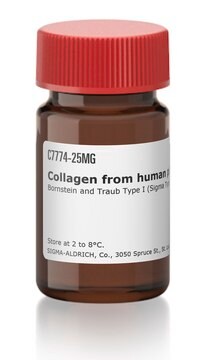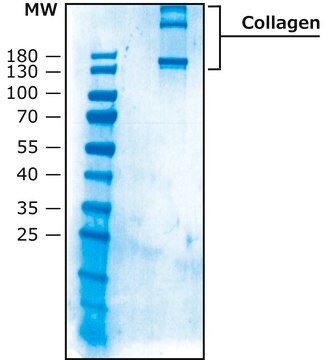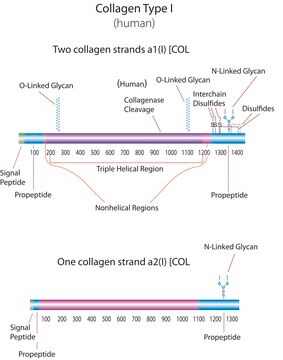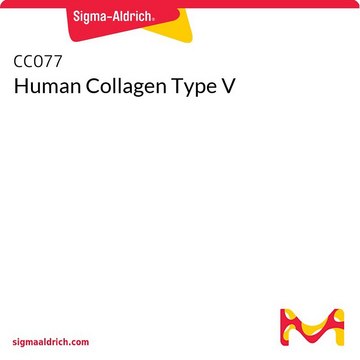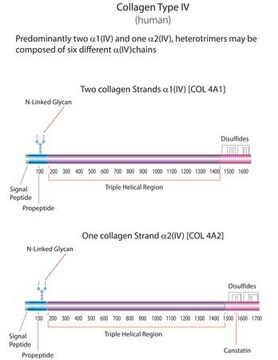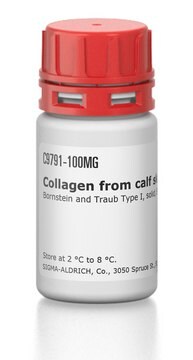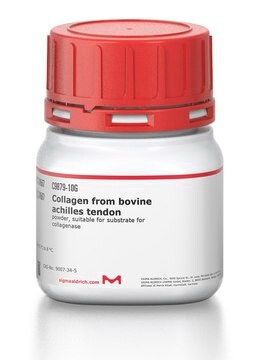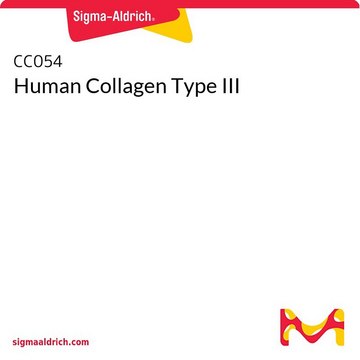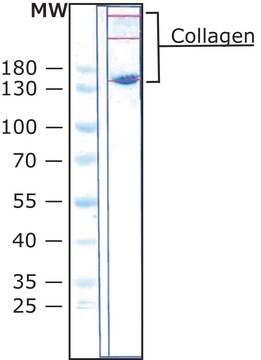Wichtige Dokumente
C3657
Human Collagen Type V
from human placenta, powder, suitable for detection assays
About This Item
Empfohlene Produkte
product name
Kollagen aus menschlicher Placenta, Bornstein and Traub Type V (Sigma Type IX), powder
Biologische Quelle
human placenta
Qualitätsniveau
Form
powder
Verunreinigungen
HIV, hepatitis B and hepatitis C, none detected
Löslichkeit
aqueous acid: soluble
UniProt-Hinterlegungsnummer
Anwendung(en)
detection
Lagertemp.
2-8°C
Angaben zum Gen
human ... COL5A1(1289)
Suchen Sie nach ähnlichen Produkten? Aufrufen Leitfaden zum Produktvergleich
Komponenten
Vorsicht
Angaben zur Herstellung
Hinweis zur Analyse
Sonstige Hinweise
Lagerklassenschlüssel
11 - Combustible Solids
WGK
WGK 1
Flammpunkt (°F)
Not applicable
Flammpunkt (°C)
Not applicable
Persönliche Schutzausrüstung
Eyeshields, Gloves, type N95 (US)
Analysenzertifikate (COA)
Suchen Sie nach Analysenzertifikate (COA), indem Sie die Lot-/Chargennummer des Produkts eingeben. Lot- und Chargennummern sind auf dem Produktetikett hinter den Wörtern ‘Lot’ oder ‘Batch’ (Lot oder Charge) zu finden.
Besitzen Sie dieses Produkt bereits?
In der Dokumentenbibliothek finden Sie die Dokumentation zu den Produkten, die Sie kürzlich erworben haben.
Kunden haben sich ebenfalls angesehen
Unser Team von Wissenschaftlern verfügt über Erfahrung in allen Forschungsbereichen einschließlich Life Science, Materialwissenschaften, chemischer Synthese, Chromatographie, Analytik und vielen mehr..
Setzen Sie sich mit dem technischen Dienst in Verbindung.